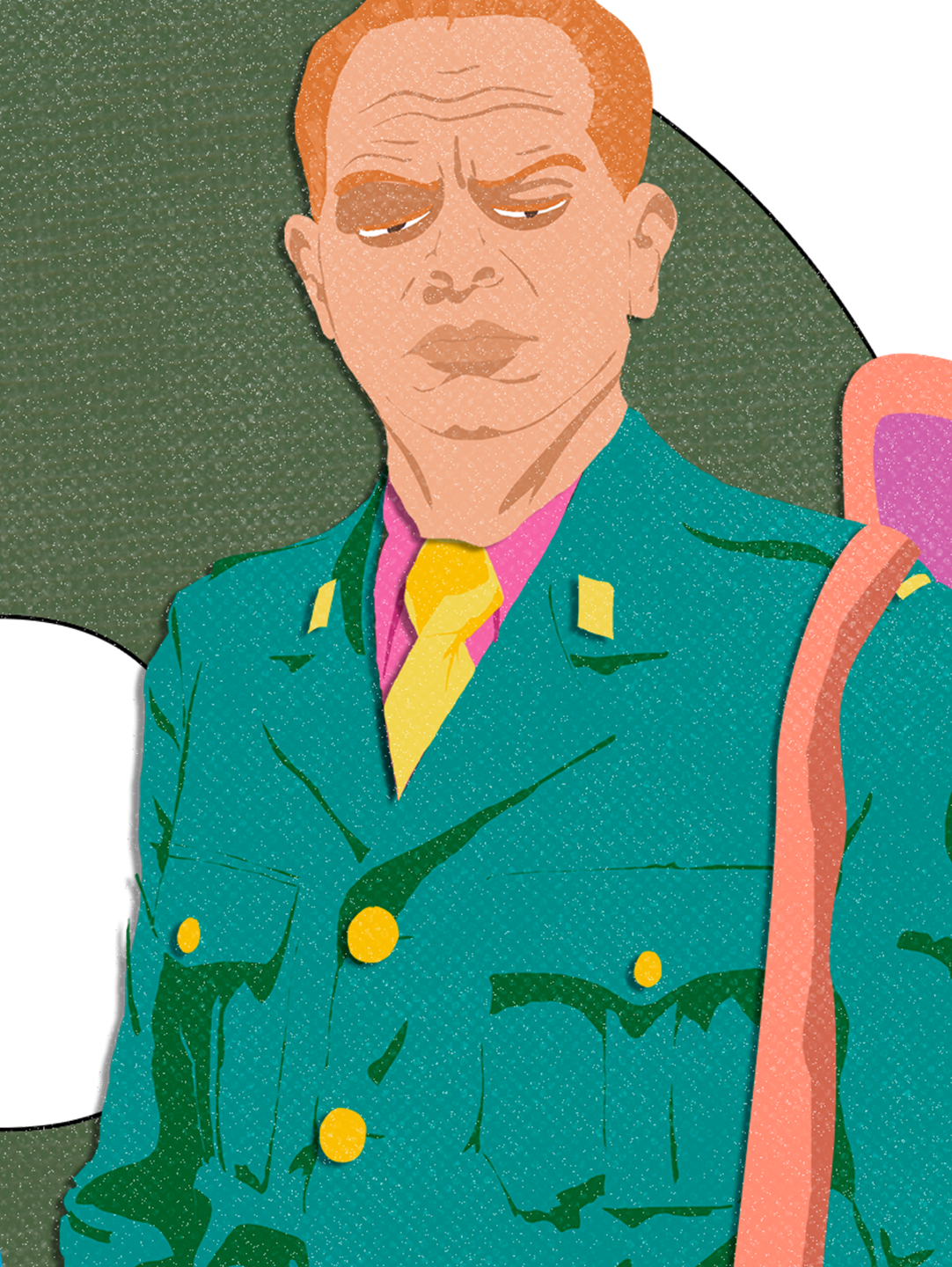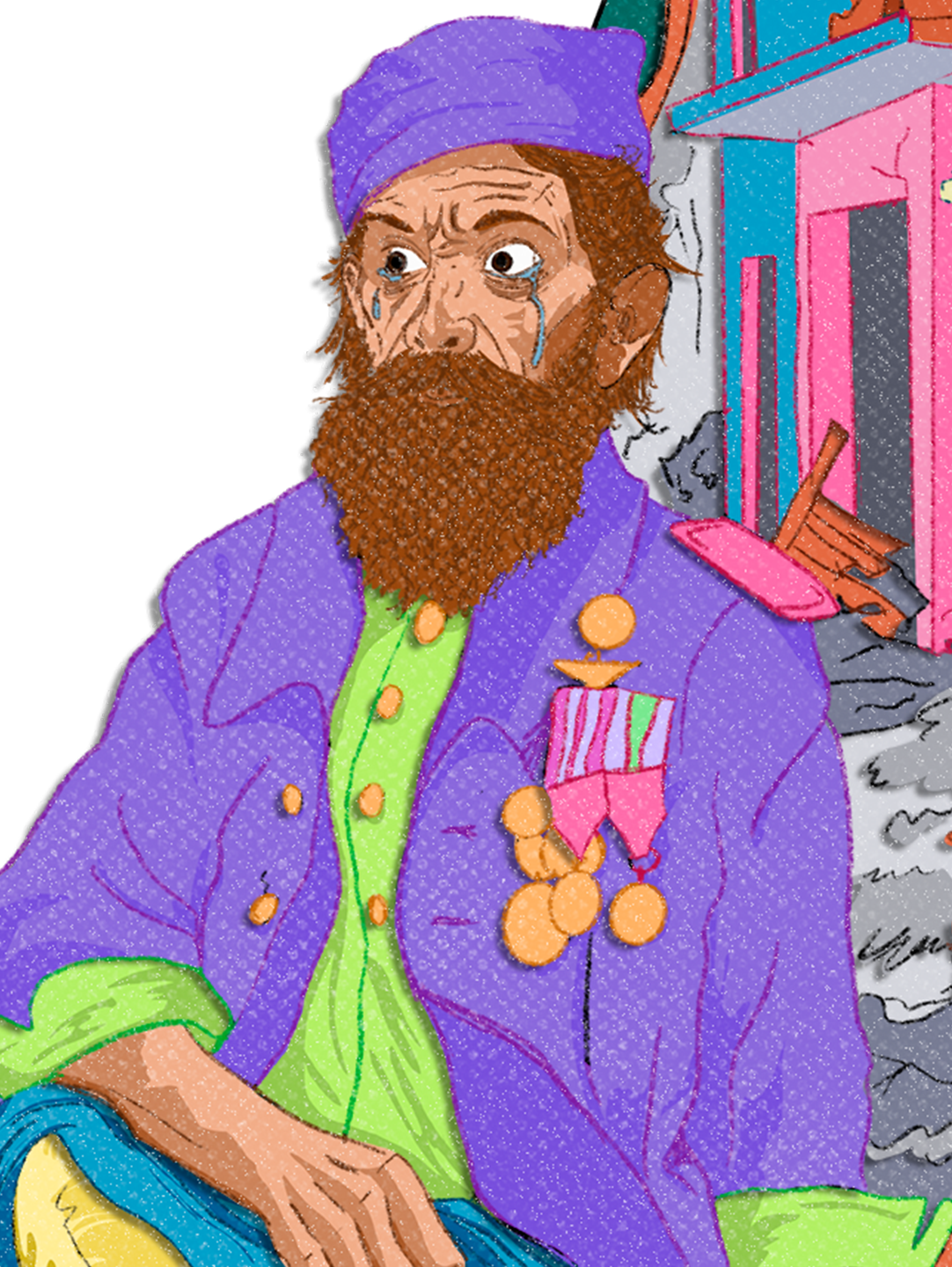Adobe Photoshop
Procrate
Adobe After Effects
Procrate
Adobe After Effects
CREDITS:
Creative supervisor: Natalia Arias
Copywriter: Ana Benítez
Creative supervisor: Natalia Arias
Copywriter: Ana Benítez
Reflections on tyranny and redemption
"El Otoño del Patriarca" by Gabriel García Márquez immerses the reader in the life of an anonymous dictator in a fictional Latin American country. Through a complex and elaborate narrative, the author weaves a fable about the loneliness of power and the terrible consequences of tyranny.
The novel takes us into the world of the patriarch, an illiterate and authoritarian man who lives surrounded by luxury and servants in a presidential mansion. As he ages and his empire crumbles, different stages of his life are explored through flashbacks and temporal jumps, revealing his personal relationships and close collaborators. Deep themes such as abuse of power, corruption, and political oppression are addressed. The patriarch's deterioration, obsessions, conflicts, and symbolic deaths are evident, offering a reflection on loneliness, mortality, and the legacy of a dictator, presenting a complex portrait of the tyrant and the consequences of his reign.
Sketch of the visual proposal
Rise to power
The patriarch's rise to power is a pivotal moment marked by corruption, manipulation, and cruelty. Financed by the English and supported by the "gringos," Zacarías seizes power through a military coup. This event establishes the foundations of his authoritarian regime and marks the beginning of his reign.
From the outset, the patriarch is portrayed as a powerful and authoritarian man, despite his illiteracy. He exercises his power relentlessly, relying on his instinct and ability to make verbal deals.
Uprisings and Betrayals
The powerful yet ruthless patriarch experiences different situations that threaten his government. One key moment illustrating rebellion is when General Rodrigo de Aguilar attempts to take his place. Although initially, the patriarch does not retaliate, he later discovers the treasonous intentions of Patricio Aragonés, another close figure. This revelation triggers a confrontation between them, revealing the distrust and power struggle within the patriarch's regime.




The tragedy
The city is ravaged by a cyclone, and the protagonist wakes up in the middle of the night with a catastrophic feeling. Absolute silence reigns in the city, and he soon learns of the devastation caused by the cyclone.
After its passage, the patriarch boards a barge to inspect the aftermath.
The cyclone symbolizes a devastating event that dismantles everything the patriarch had built in his city. This moment becomes a turning point marked by change and rebirth, as the patriarch decides to help others and rebuild a great nation after the tragedy.
The Autumn
The death of the patriarch in "El Otoño del Patriarca" is a transcendental and symbolic event marking the end of his ruthless reign. After years of absolute power, he is found in a state of abandonment and decay within his own house, now a stable for cows and a refuge for vultures. The scene of his death reflects the physical and moral deterioration of the character, as well as the collapse of his dictatorial regime and the loss of the opportunity for redemption. It reflects on the corrupting power and inevitable consequences of his past actions.